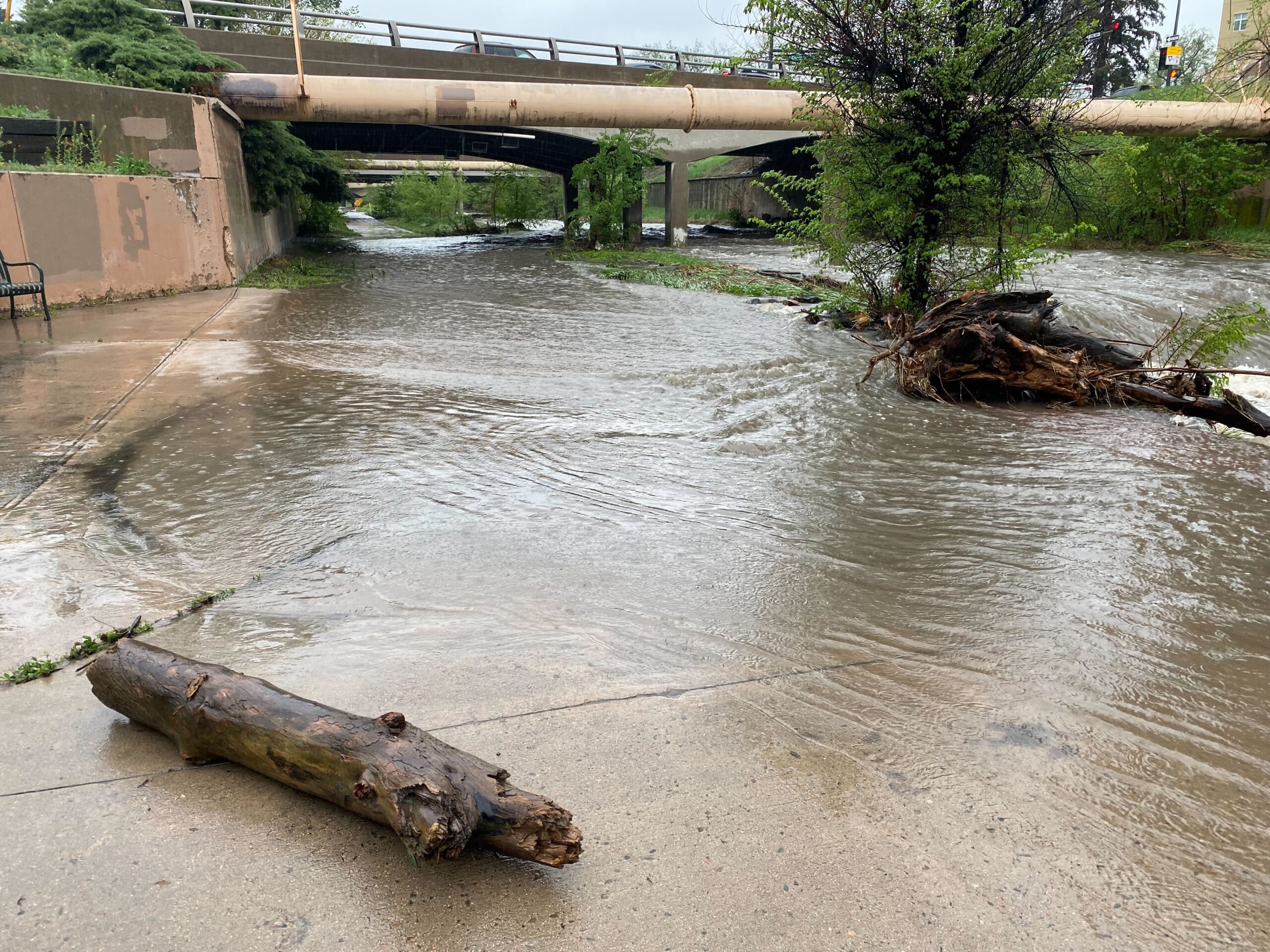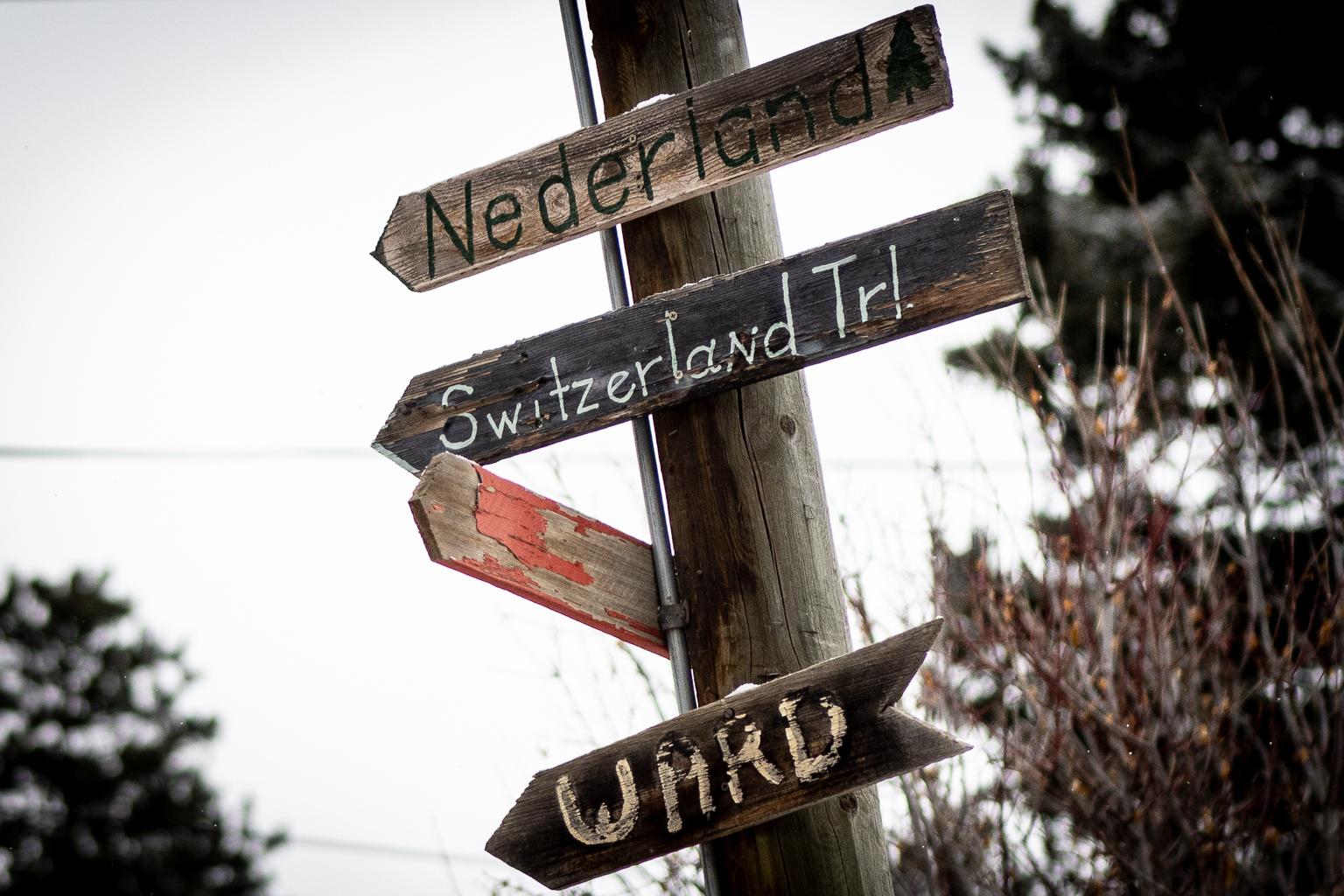
After days of being under flood advisories, Colorado's Front Range is starting to emerge from what has seemed like endless rain. Some homes experienced flooding, Colorado Springs set a rain record, the Eastern Plains saw hail and tornadoes, while the mountains added to their already impressive snow totals this year.
To get perspective on this historic precipitation, CPR's Ryan Warner spoke with state climatologist Russ Schumacher.
This transcript of their conversation has been edited for clarity.
Ryan Warner: Why has this weather system been parked over us?
Russ Schumacher: We've had this trough of low pressure kind of sitting and spinning over the middle part of the country for the last few days. And here in Colorado we're on the west side of the system now. So, the moisture wraps around the north side of that low pressure system and then pushes up here against the Front Range. And so we've had, obviously, some big thunderstorms a couple days ago, including quite a bit of hail since then, and steady rain over most of the Front Range and the northeastern plains as well.
Warner: And there were tornados, right?
Schumacher: That's right. There were at least a couple of tornadoes spotted out near Akron the other night.
Warner: Can you put the amount of moisture into context for us?
Schumacher: The heaviest rain, the largest amounts that have been reported, have been sort of from the eastern Denver metro — the Aurora area, around Denver International Airport, and down through Castle Rock down into Colorado Springs. At DIA, it was 3.57 inches over the last two days, plus some more. This morning, it's the third wettest two-day period that has ever been observed in Denver.
In Colorado Springs it was the wettest May day that they've ever had, with 3.18 inches yesterday. Those are some pretty remarkable totals. We've seen some flooding issues, but the good news is that it didn't all come in six hours. It was somewhat more steady and relentless, with heavy amounts spread out over a couple of days.
Warner: The flooding and leaky roofs are a major headache. I also want to talk about the potential benefits here. Does the moisture help lower the risk of wildfire in coming months?
Schumacher: Yeah, I think so. I mean, most mountain areas have seen pretty big snowpack this winter, and so that's going to get the soils moistened up there. Then we look out onto the Eastern Plains where the spring has been pretty dry before this storm. And so this is a huge benefit for the agricultural areas of eastern Colorado, which have struggled with drought mightily over the last several years. This is going to be a big help there to turn that around, at least for the short term, during the planting season and the early part of the growing season. To get all this rain is going to be a big boost.
Warner: So in some ways, this kind of balances out the moisture from the mountains to the plains?
Schumacher: Yes, and even the high elevations have gotten a fair amount of snow during this storm, as well, so it's keeping the snow up there.
Warner: Is the kind of moisture we've experienced something we should expect over the long haul in the face of climate change?
Schumacher: At least for the northern Front Range, May is the wettest month, on average. So it's not that unusual to get a couple days of big rains in May. The general expectation under climate change is probably more extended dry periods punctuated by more intense rain in between. So maybe not a big change in the overall amount of precipitation, but longer dry periods with then periods of even more intense rain in between those.
We've seen some of that in Colorado up to this point, but we haven't seen a lot of the really extreme rain amounts that have been seen in, say, the Midwest and the Southeast. And I think partly here it's because we've been mostly mired in drought for the last couple of decades and — other than the September 2013 flood — we haven't had these big floods. But that is something we sort of expect in the future. Increases in intense rain probably will show up here in Colorado, even though they haven't up to this point.









